
views
New Delhi: It’s been two years since India conducted cross-border strikes to avenge the deaths of soldiers who were martyred in the 2016 Uri attacks. On the second anniversary of the meticulously planned and executed military operation, Lt Gen DS Hooda, then heading the Northern Command, reveals that the entire operation was kept so secret that only about 40 people in the country know about it and most people in his headquarters were also taken by surprise the next day.
Sepaking to CNN-News18's Shreya Dhoundial, Hooda says Pakistan denied the operation as “it would have been matter a great shame for the Pak army to admit to it". Excerpts from the interview:
Surgical strikes were a meticulously planned and executed military operation, but there are some facets that are not well-known. First, how top-secret this was? How many people were in the loop?
Hooda: Very few. The PMO, NSA, Defence Minister. In the Army, the chief and the vice-chief knew, also military operation directorate and DGMO, maybe 3-4 officers there. In my headquarters we restricted it to a few officers in the operations and intelligence branch, maybe 7-8 people. Then the people who executed it. Even then, all of them knew only their part of the operation. Nobody knew the complete plan. The morning after the surgical strike, when the press conference went on, 99 per cent of my headquarters were completely surprised that something like this has happened. We had kept it quite closed.
So not more than 40 people in the entire country knew what was going on.
Hooda: Yes. You're right.
What about the 19 para commandos who were to inject themselves across the Line of Control? When and how much were they told?
Hooda: Actually, there were more than 100 who were involved at multiple places. Roughly, 100 were injected in. There were five targets and each team had 20-25 people. Once the whole planning was done in my headquarters, only then the soldiers were told. They were told only their specific targets.
In the army they say, "A recce never goes waste." Was there a recce done?
Hooda: A recce was done to make sure about the routes. At one place it was fairly deep. We actually had to insert a covert surveillance team one day before the operation. They spent the whole day scooping out the targets. They were joined by the balance of the crew in the night.
They were undetected for 24 hours? They didn't de-induct at any point?
Hooda: No. It was not at all five places, it was only at one place. Direct surveillance wasn't possible since it was deep inside. In some of the footages released, you'll find terrorists, which is a day-time photograph. That was taken by the surveillance team.
You mentioned that there was some concern in one target area. What concern was that?
Hooda: We were getting some information that more terrorists have come, maybe the area was reinforced, we got that information through our sources. We made sure that before the main team went in, we had complete knowledge of the target. Inducting the team was a bit of a risk, but it was well worth the risk.
How were the targets identified? We were told that these were terror launchpads. Were they just launchpads or were there Pakistani army posts in and around the vicinity?
Hooda: We had an idea of Pakistani launchpads. Typically, terrorists will come and spend time here planning out the area where they infiltrate. We had an idea where these launchpads are. In majority of cases, these launchpads were near Pak army posts. That's where they draw administrative sustenance and support from. A large number of these terror launchpads are there all over LoC. When we were supposed to strike at multiple places, based on latest information, we selected these targets.
But there were Pakistani posts in the vicinity, you were aware of that and they were targeted as well.
Hooda: We had to consider the Pak posts in the vicinity of the launchpads. The first reaction towards us would come from both the Pak posts and launchpads. We had to make sure that the Pak posts kept their heads down and they were targeted.
It's been two years. Still, there has been no fix on the number of terrorists killed that night. Figures range from 20 to 120.
CNN-News18: Nobody waited to count the bodies. They had to do a quick destruction of the launchapds, neutralise whoever it was there, and move back quickly into our area. Maybe it's a figure of 60-70. It could be plus or minus 10, 15, 20. Pak army denied the next day that nothing like this happened. Sometimes you depend on info coming from open sources, which didn't come. But our estimate was 60-70.
Were you surprised by how quick the denial from Pakistan came?
CNN-News18: We were surprised. It was a massive operation. Your channel spoke to a policeman across and he confirmed it. I'm sure they could have been some casualties of Pak uniform people also because they were in close vicinity of the posts. To deny one's own martyrs was a bit of a surprise. It was positive in one way because it gave us the signal that we're not going to see any retaliation from the Pak army. It was a shock for them to admit such a thing was done by the Indian Army. It would have been a great shame for the Pak Army. The troops crossed Pakistani line of defences, hit the camps and came back. This is one of the heavily guarded borders of the world.
I'm surprised that they weren't ready. Because Uri had happened 10 days ago. Was Pakistan so confident that Indian Army won't retaliate?
Hooda: That's another thing that caught us by surprise. I think they didn't expect it at all. After all they were all bloody-nosed, they didn't want to admit it.
So there was no crossfire? They didn't fire back?
Hooda: We were monitoring their radio conversations to check their alertness. There would be a sense of alert all over LoC which would make our future actions complicated. But we didn't even see this kind of reaction from their side. It was just complete disbelief and shock.
At what time did they fire back? The entire operation lasted one hour?
Hooda: It was much more than that. Troops started moving in as soon as it was dark. So around 8-8:30 in the evening. We hit the first target at about midnight. The last target was hit at around 6:30 in the morning. So people were in their territory for 10-11 hours.
Was there a white flag that was raised on the other side?
Hooda: We did see such thing in one of the posts, yes.
Please explain what that means.
Hooda: Sometimes when there is too much pressure, you tend to raise the white flag. Let me just leave it there.
You don't want to say anymore. After the operations, there was live feed coming from the drones, and many soldiers had helmets with cameras. How many people were monitoring it? Where were you?
Hooda: We were there in the underground command post. We were there for 7-8 hours. We were watching multiple streams from UAVs. You can't exactly make out the details, but suddenly you'll see a huge bloom of flames when firing takes place. We did know that everything was going largely according to the plan.
Was de-induction the toughest part? There are now documentaries on Surgical Strikes, at least two books have been written. Soldiers were saying that the worry was de-inducting, crossing back to your side of the border.
Hooda: Yes. Once the first attack takes place, everyone in the area is alerted. To come back at that point was the toughest challenge. It wasn't just crossing back. We were conscious that our men might get injured, we might have to carry some injured boys along, which made the de-induction planning more challenging.
Was it just 10 days of planning or was it anticipated?
Hooda: The planning started post Myanmar ops. We anticipated that the northern Commander might be asked to conduct a similar operation to remove terror launchpads. Intel gathering, satellite photographs, making tentative broad plans, and everything else including human intel sources across the border were brought together. In the winter of 2015-2016, we pulled out two special forces battalions. We concentrated on them and trained them to conduct cross-border tasks. Broadly, the plan was in place. We'd had 13-14 contingencies depending upon where we'd go. Once Uri had happened, we fine-tuned final list of targets in that week-10 days. We also finalised the deployment of personnel in different teams and provided commands on the kind of weapons they'd carry.
Did you get any sleep?
Hooda: On 28th and 29th, I had no sleep as I was sitting in the ops room. We went in as soon as it was dark. I'd come out at sunrise. At times like these, tiredness gets to you only after an event of such magnitude has passed. At that moment, it kind of weighs down on you that you must be a bit tired.
When was the Prime Minister intimated and what was his reaction?
Hooda: I informed the Chief of Staff in the morning at around 7.30-8.00. We'd decided that success signal will be given once the last man is back in. half-an-hour later, the defence ministry called me and said, 'well done'. At that same point of time, they must've told the PM.
Was it the first time that a large-scale operation of this kind was conducted?
Hooda: The answer is that it wasn't the first. There have been cross-border operations in the past. It was different because the scope was large. Multiple targets were taken into account from the Jammu region to the Kashmir region. The depth at which they went in and struck multiple terror launchpads was something not done in the past. The second major part was, the government acknowledged that we'd done it. It also puts some pressure. You can accept that it's successful or else you can deny. I was aware that the news will be announced the next day, so I had to make sure that everything would succeed.
Did the strikes achieve its strategic aim? Uri was avenged, but terrorism is still ongoing?
Hooda: When we were planning, it was nowhere in our minds that these surgical strikes would stop the flow of terror from Pakistan. It also wouldn't dissuade the Pak army's usual habits of many decades. They'd do what they were doing. We needed to send a strong message to Pakistan and our own constituency. My soldiers were asking me, ‘what are we going to do regarding the lives lost in Uri?’ It wasn't about revenge, retribution. It wasn't about revenge, retribution. The questions posed to us were, ‘if the Army cannot protect its own garrisons, what are we going to do?’ So, I think that message needed to be delivered that we would not just sit back and defend our own area. But a message will be sent across. People ask about a second surgical strikes, but that isn't the procedure or norm. With Pakistan, you need a sustained approach. The Pak army is a professional army, they aren't going to roll over.
As a soldier who has lost comrades, do you think dialogues are a way to bring Pak into the peace process? Do you think it's viable to initiate Indo-Pak talks? Are talks the way to bring about peace between the two nations?
Hooda: Diplomacy is something we need to look into before resorting towards exerting force. The options needs to be pondered upon and looked at. The problem here is the approach. Terror must stop, and violence must come down to pave the path for talks. Pakistan feels that by continuing terror attacks, they can pressurise India on the negotiating table. There should be a meeting ground between these two diametrically opposite approaches. I don't know the path that diplomacy will take, but to answer the question, I'll say that we should certainly talk. We need to build an environment to make sure that these talks are a success. Whether that will be done or not is a big question.














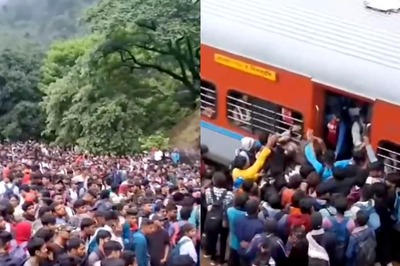
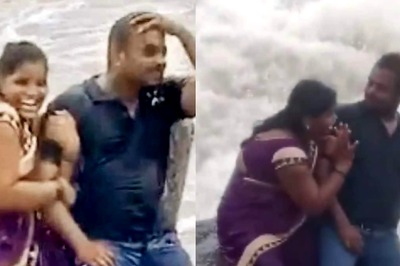
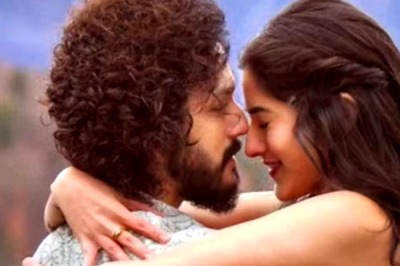
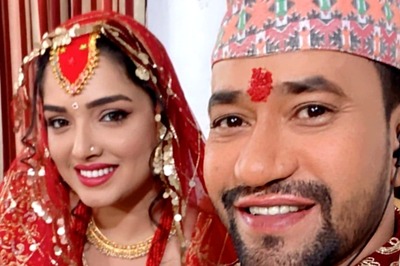
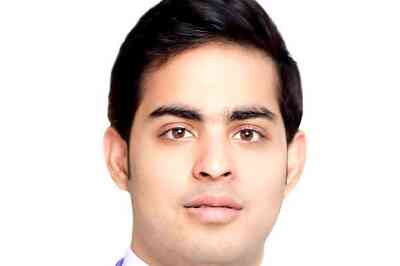
Comments
0 comment